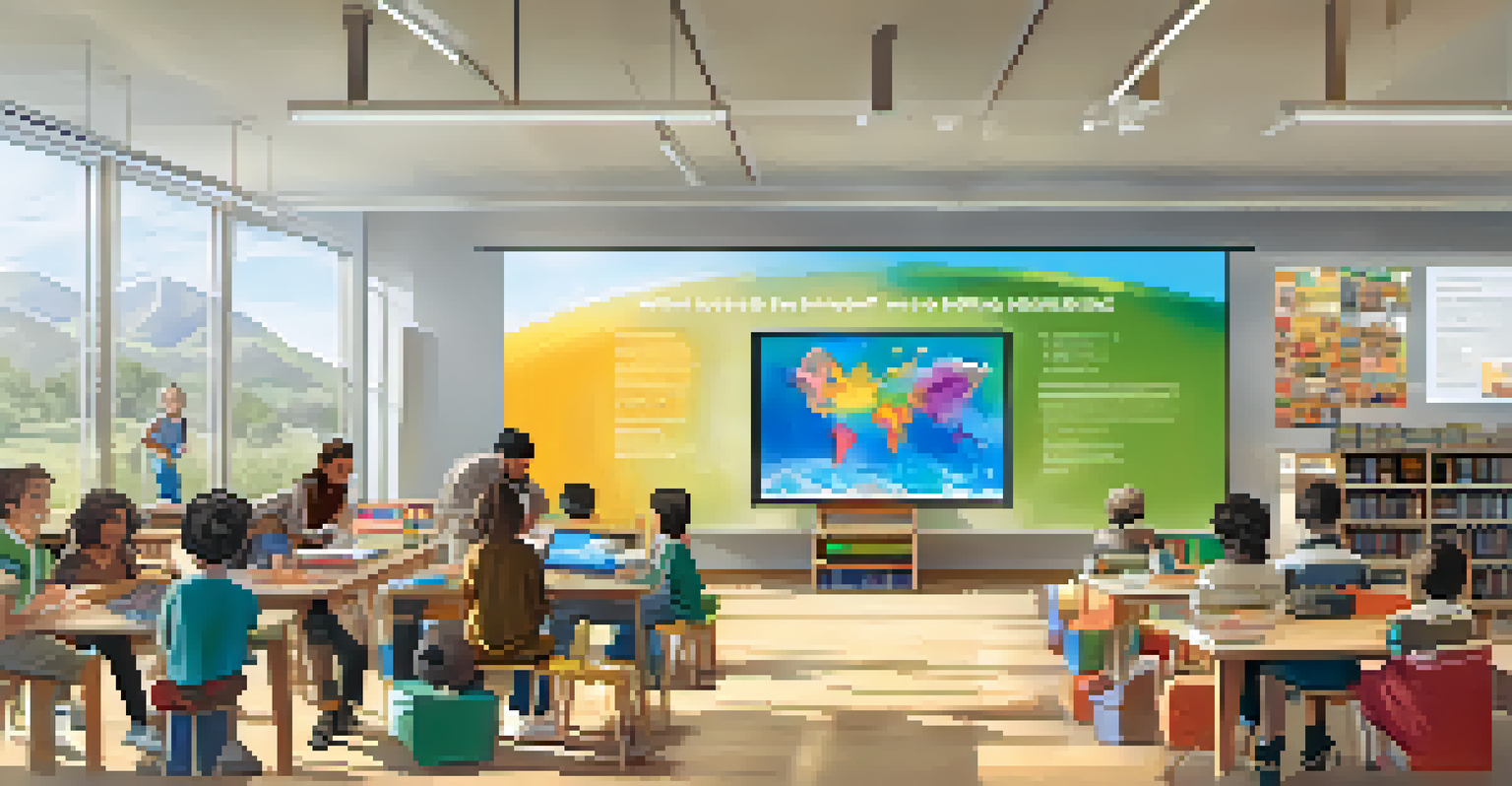Developing a Comprehensive Strategy for Adaptive Learning

Understanding Adaptive Learning: A Brief Overview
Adaptive learning is a personalized approach to education that tailors learning experiences to individual student needs. Imagine a smart tutor who adjusts the difficulty of questions based on how well you're doing—this is essentially what adaptive learning does. By leveraging technology and data, it helps educators identify the strengths and weaknesses of each learner, making the learning process more effective.
The only way to learn mathematics is to do mathematics.
This method is particularly beneficial in diverse classrooms, where students may have varying backgrounds and skill levels. Instead of a one-size-fits-all curriculum, adaptive learning allows for customized pathways that enhance engagement and retention. It encourages a more inclusive educational environment where every student can thrive at their own pace.
Ultimately, understanding the essence of adaptive learning sets the stage for developing a comprehensive strategy that meets the needs of all learners. As we dive deeper into the components of this strategy, keep in mind that the goal is to create an enriching learning experience that fosters growth and achievement.
Assessing Learner Needs and Preferences
Before implementing an adaptive learning strategy, it's crucial to assess the unique needs and preferences of your learners. This assessment can take various forms, including surveys, interviews, or diagnostic tests. Gathering this information helps you understand what motivates your students and where they may struggle.

For instance, some learners thrive with visual aids, while others prefer hands-on activities. By identifying these preferences early on, you can tailor your adaptive learning materials and methods accordingly. This personalized touch not only enhances engagement but also ensures that students feel valued and understood.
Personalized Learning Experience
Adaptive learning tailors educational experiences to meet individual student needs, enhancing engagement and retention.
Incorporating learner feedback into your strategy allows for continuous improvement. As you gather insights, you can make informed adjustments to your approach, ensuring that your adaptive learning strategy remains relevant and effective.
Setting Clear Learning Objectives and Outcomes
Establishing clear learning objectives is a fundamental step in developing an adaptive learning strategy. These objectives provide a roadmap for both educators and students, ensuring that everyone understands what is expected. Think of it as a treasure map: without clear directions, it's easy to get lost along the way.
Education is not the filling of a pail, but the lighting of a fire.
When crafting these objectives, aim for specificity and measurability. For example, instead of a vague goal like 'improve math skills,' a more precise objective would be 'increase algebra proficiency by 20% by the end of the semester.' This clarity not only helps in tracking progress but also motivates learners as they see their achievements unfold.
Moreover, aligning your objectives with adaptive learning technologies can enhance the personalization of the learning experience. These technologies can track progress toward these defined outcomes, allowing for timely interventions and support when needed.
Leveraging Technology for Personalized Learning
Technology plays a pivotal role in the successful implementation of adaptive learning strategies. Tools such as learning management systems (LMS) and educational apps can help create a dynamic learning environment tailored to individual needs. These platforms can analyze data on student performance, enabling educators to make data-driven decisions.
For example, a robust LMS can identify patterns in a student's learning behavior, such as subjects they find challenging. With this information, educators can provide targeted resources, like videos or practice quizzes, to address those specific areas. This personalized approach not only improves comprehension but also boosts student confidence.
Importance of Clear Objectives
Establishing specific and measurable learning objectives provides a roadmap for educators and students to track progress effectively.
Moreover, integrating gamification elements into your adaptive learning strategy can enhance engagement. By incorporating game-like elements such as rewards and challenges, students are more likely to stay motivated and invested in their learning journey.
Creating Engaging and Diverse Learning Materials
Diversity in learning materials is essential for an effective adaptive learning strategy. By offering a mix of resources—such as videos, interactive quizzes, and readings—you can cater to various learning styles and preferences. This approach not only keeps learners engaged but also helps reinforce concepts in multiple ways.
For instance, consider a topic like climate change. An educator could present a documentary for visual learners, an article for those who prefer reading, and an interactive simulation for hands-on learners. This variety ensures that all students have the opportunity to grasp the material in a way that resonates with them.
Additionally, regularly updating and refreshing learning materials can maintain student interest. By incorporating current events or emerging trends, you can create relevance that enhances understanding and encourages critical thinking.
Implementing Continuous Assessment and Feedback Mechanisms
Continuous assessment is a key component of adaptive learning, allowing educators to monitor student progress regularly. Unlike traditional assessments that may occur at the end of a unit, continuous assessment offers real-time insights into how learners are advancing. This enables timely interventions and support as needed.
Feedback should be constructive and timely, guiding students on their learning journey. When students receive immediate feedback on their performance, they can quickly identify areas for improvement and adjust their learning strategies. Think of it as a GPS navigation system, providing directions based on where you currently are.
Continuous Assessment is Key
Implementing ongoing assessments and feedback allows for real-time insights into student progress, enabling timely interventions.
Moreover, incorporating self-assessment opportunities can empower students to take ownership of their learning. By reflecting on their progress, they can set personal goals and develop a sense of accountability, which is crucial for fostering a growth mindset.
Fostering a Collaborative Learning Environment
A collaborative learning environment is essential for maximizing the benefits of adaptive learning. Encouraging students to work together fosters peer-to-peer learning, where they can share insights and support each other's growth. This collaboration can create a sense of community that enhances the overall learning experience.
For instance, group projects or study sessions can be designed to leverage individual strengths, allowing students to learn from one another. When learners collaborate, they not only reinforce their understanding but also develop valuable social skills that are crucial for their future endeavors.

Educators can facilitate collaboration through technology, using tools like discussion boards or collaborative documents. These platforms promote communication and idea-sharing among students, making learning a more interactive and engaging process.